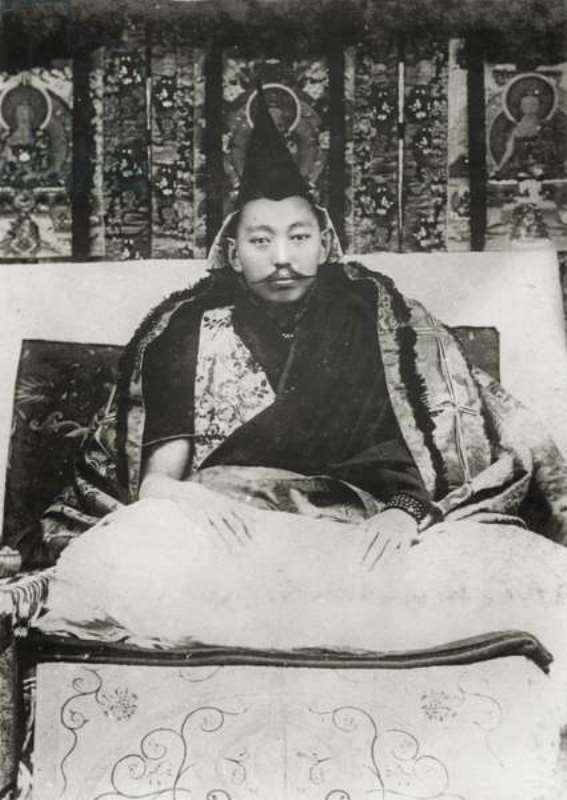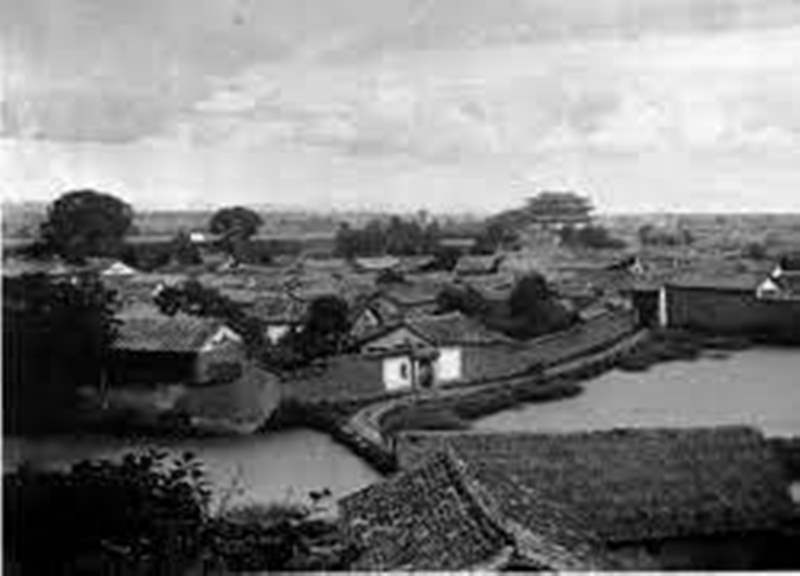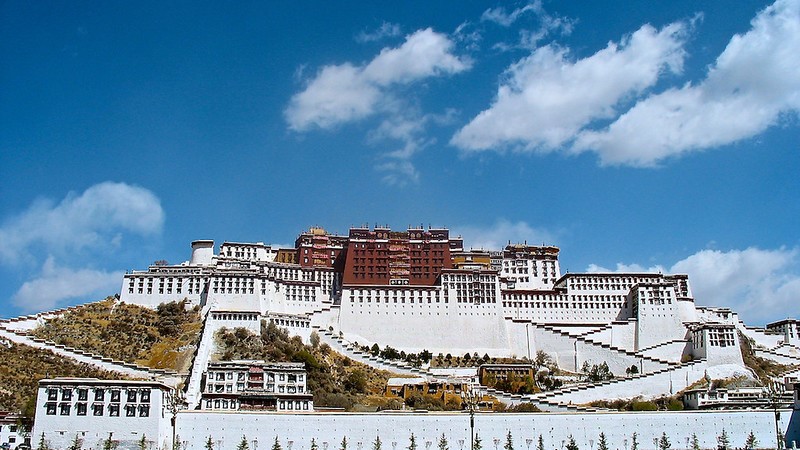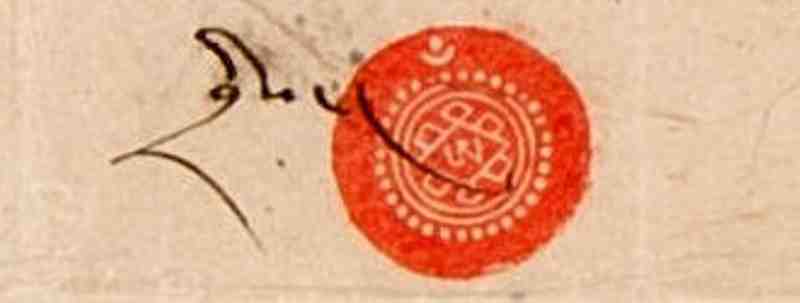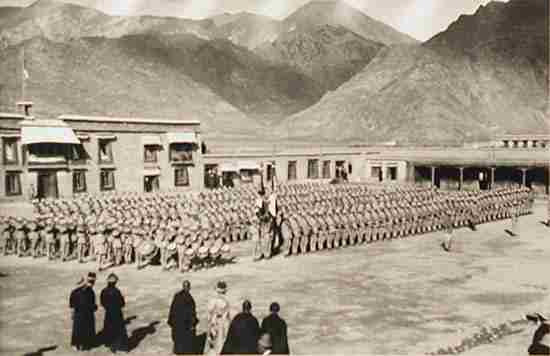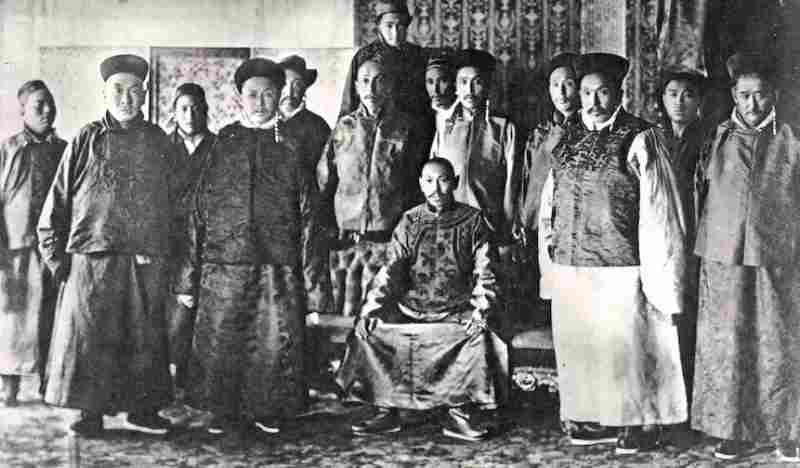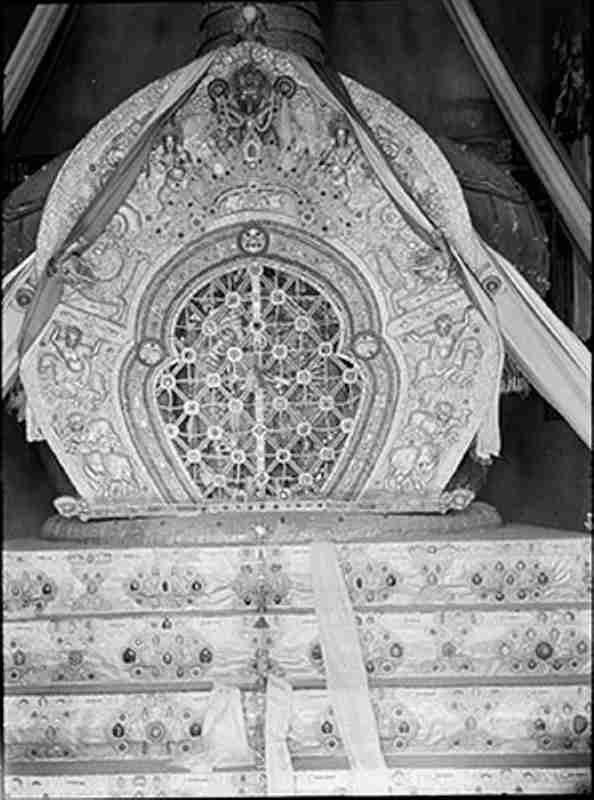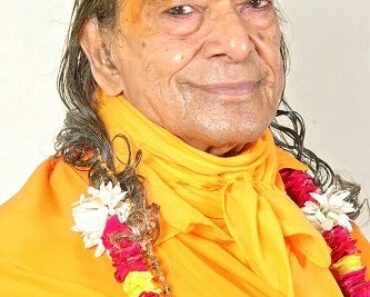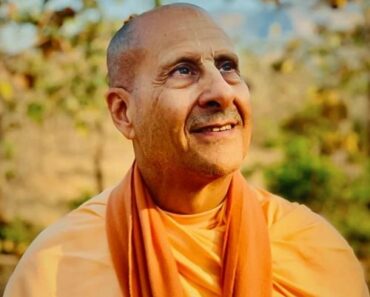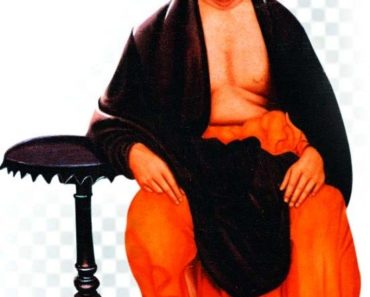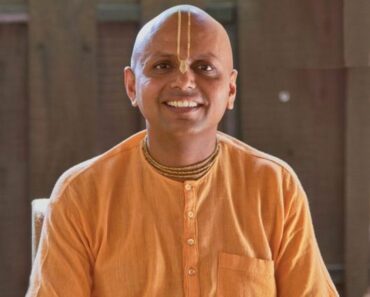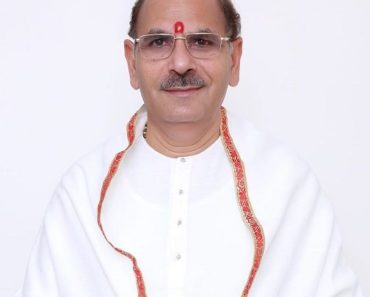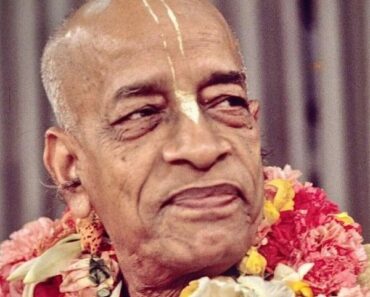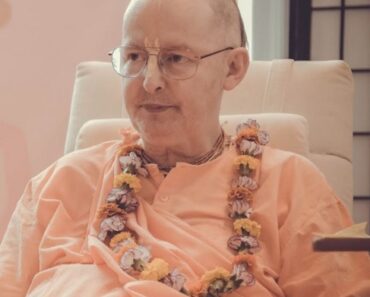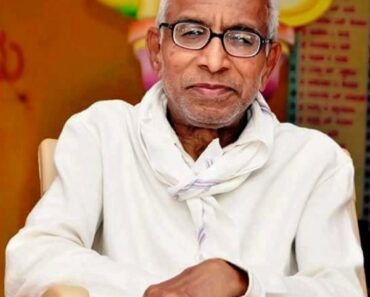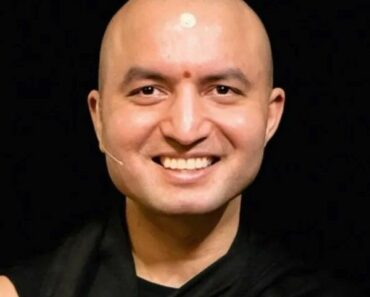Thubten Gyatso, also known as Ngawang Lobsang Thupten Gyatso Jigdral Chokley Namgyal (1876-1933), was the 13th Dalai Lama of Tibet. [1]Dalai lama In 1877, at the age of 2, he was recognized as the next reincarnation of the Dalai Lama. He was known as ‘The Great Thirteenth.’ He was responsible for initiating the modernization of Tibet and introduced electricity, telephone and the first automobile to the country. [2]Indian Defence Review He was an intellectual reformer of law and a great politician. During his regency, he restored discipline in monastic life, appointed more non-ordained members as government officials and administered a secular education system. He died on 17 December 1933 (at the age of 57) in Lhasa, Tibet. [3]Dalai lama He was succeeded by Gyalwa Rinpoche (22 February 1940) as the 14th Dalai Lama of Tibet. [4]Dalai lama
Contents
Wiki/Biography
Ngawang Lobsang Thupten Gyatso Jigdral Chokley Namgyal, abbreviated as, Thubten Gyatso was born on Saturday, 12 February 1876 in the village of Thakpo Langdun, Ü-Tsang, Tibet. His birth was accompanied by various auspicious signs including one tale of the Dakpo (dwags po) being destroyed in an earthquake except for his family house. From other sources, some mystical sightings were also reported. [5]The Treasury of Lives During his childhood, he suffered from various illnesses. Notably, he got severely ill during the Smallpox epidemic in Lhasa in 1882. He was recognized as the thirteenth Tibetan spiritual leader after the untimely demise of the 12th Dalai Lama Trinle Gyatso (1856-1875). [6]The Treasury of Lives He began his early studies at Potala Palace and after a long period of denying his political duties, he assumed his position in 1895. In 1899, he took the exam for the degree of Geshe Lharampa, the highest academic degree awarded within the Gelukpa monastic educational system. He became the first Dalai Lama with the Lharampa degree. [7]The Treasury of Lives
Discovery of the 13th leader
In 1875, after the sudden demise of the 12th Dalai Lama, Trinle Gyatso (ta la’i bla ma 13 ‘phrin la rgya mtsho), the new reincarnation was prophesized in the South-East direction by the Nechung Oracle. Thubten Gyatso was discovered by Khenzur Lobzang Dargye (mkhan zur blo bzang dar rgyas, d.u.) at his village where he was confirmed as the next Dalai Lama. He was then brought to the Potala Palace for the official ceremony. [8]Tibetan Buddhism in the West On 1 August 1879, the 8th Panchen Lama, Tenpai Wangchuk, also known as Namgyal Wangdui Gyaltsen (1855–1882) ordained Thubten Gyatso as the 13th Dalai Lama of Tibet. He was bestowed with the name Jetsun Ngawang Lobzang Tubten Gyatso Jikdrel Wangchuk Chokle Namgyel Pelzangpo (blo bzang thub bstan rgya mtsho ‘jigs bral dbang phyug phyogs las rnams rgyal dpal bzang po). [9]The Treasury of Lives
Family
Parents
His father’s name was Kunga Rinchen (kun dga’ rin chen) and his mother’s name was Lobzang Dolma (blo bzang sgrol ma). They were a peasant family before his discovery as the 13th reincarnation of Dalai Lama. After his enthronement, his family was ennobled by the Qing Emperor and his father was bestowed the title of Gong (a high rank of Chinese nobility, Zhou Dynasty, Han Dynasty). [10]Tibetan Buddhism in the West
Signature
Gaining Political Power
After his enthronement, he received the Upasaka (Tib.: ge-nyen) vows from the Regent Tatsak Rinpoche, Ngawang Palden Yeshi. [11]Dalai lama At the age of six, he was formally ordained as a novice monk in 1882. His tutor, Phurchok Ngawang Jampa Rinpoche, ordained him as a full monk (Tib.: ge-long) in the Jokhang Temple, Lhasa, on 8 August 1895. He assumed spiritual and political authority of Tibet on 27 September 1895. He learned the complexities of international politics and the importance of foreign relations during his exile period at the time of the British invasion (1904-1909), and the Chinese invasion (1910 to 1913).
Tibetan-British Army Clash: Dalai Lama’s fulfilled prophecy
In 1880, after receiving Dalai Lama’s blessings, nine hundred Tibetan soldiers were led by Depon Ngapo (mda dpon nga phod, d.u.), and Surkhang (zur khang, d.u.) to guard the Sikkim-Tibetan border against the British army. The first armed clash occurred in March 1888 between them which resulted in the retreat of the technologically inferior Tibetan Army. [12]Civils Daily The recurring events led to the “Anglo-Chinese Convention Relating to Sikkim and Tibet” treaty signed by the Chinese Qing government and the British government in 1890. The treaty defined the Tibet-Sikkim frontier and granted the British government the right to trade and enter Tibet. The Tibetans refused the treaty and demanded Lhasa be in control of Tibet. This led to further clashes between the Chinese, British and Tibetan officials and resulted in Dalai Lama leaving Tibet to seek refuge in other countries. The entire event from the British invasion to Dalai Lama’s flight to several countries was foretold in his dream when he was thirteen years old (1889). In 1909, he fled Lhasa with his officials towards India. He returned to Tibet in January 1913, after the Manchu Dynasty was overthrown. He refused to accept any ranks under the new Chinese government and resumed the political and spiritual leadership of Tibet. He then went on to exercise more of his political powers aided by the knowledge he earned during his exile in India. [13]Tibet Swiss In 1910, he met Sir Charles Alfred Bell (1870-1945), known as British India’s ambassador to Tibet, who then wrote his biography called “Portrait of the Dalai Lama” in 1946. [14]Portrait of a Dalai Lama: the Life and Times of the Great Thirteenth
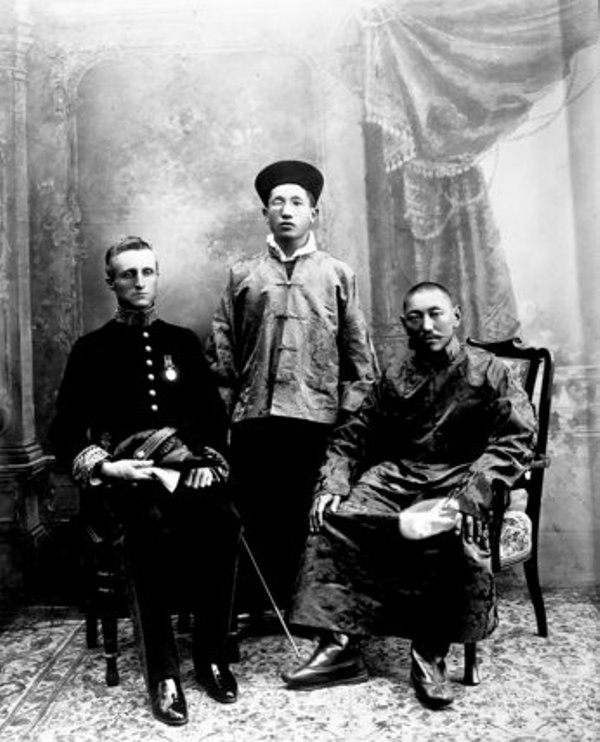
The 13th Dalai Lama (sitting on the right), Sir Charles Alfred Bell (left seated), Maharaj Kumar Sidkeong Trul-ku (standing) March 1910, Calcutta
Modernization of Tibet
After his return from Mongolia, China and India, Thubten Gyatso (Dalai Lama) set on a mission to bring political and modern reforms to Tibet. He then directly assumed political control of all foreign relations. In 1913, he declared the independence of Tibet from China followed by issuing Tibet’s paper currency, coins, postage stamps, standardization of the Tibetan flag, establishing the first post office, and reasserting Tibetan independence. [15]Buddha Land
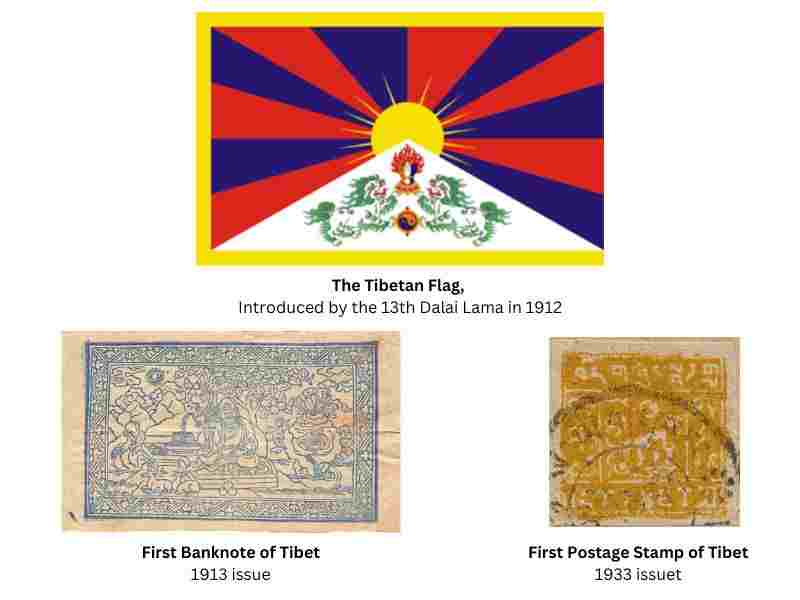
The 13th Dalai Lama introduced the Flag of Tibet (1912), the first Banknote and postage stamp of Tibet (at the end of 1912)
Dalai Lama aimed at enforcing the Tibetan military force and organized special training for the Tibetan army in 1914. [16]A History of Modern Tibet, 1913–1951: the demise of the Lamaist state, Volume 1
He also established several crucial institutions including the Tibetan Medical Institute (Men-Tse Khang, Jokhang), a police headquarters in Lhasa and the first English school in Gyaltse. [17]Dalai lama
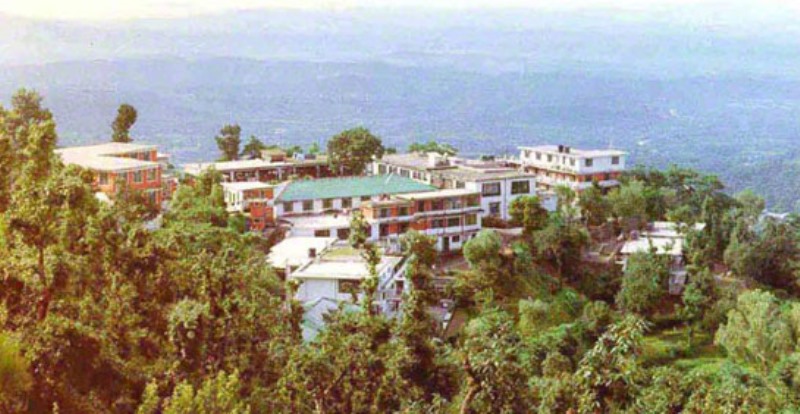
Men-Tsee-Khang was established by The 13th Dalai Lama in Lhasa, Tibet, in 1916. He then re-established the institute in Dharamshala, India on March 1961.
Dalai Lama established a national taxation system as a countermeasure to corruption among government officials. He then introduced a secular education system to the existing religious education system [18]Buddha Land, revised the penal system (abolished Capital punishment, reduced Corporal punishment), and improved living conditions in jails. Gaining knowledge from his travels across the country and some of the influential foreign representatives, Dalia Lama worked towards further modernization of Tibet. He invited foreign advisors to build educational institutions in Tibet and train the Tibetan army. [19]Dalai lama
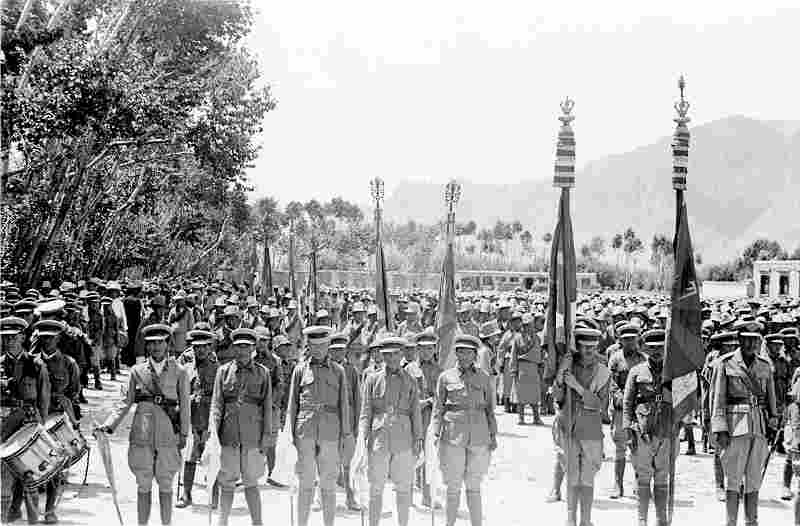
The Bodyguard Regiment (Tib. Ka dang sku srung dmag sgar)(image taken in 1948-1950), created by the 13th Dalai Lama in 1913
One out of the four boys sent by him to study in England came back with an education in Electrical engineering and installed the first power station in Tibet. The other one established a telegraph line from Lhasa to Gyantse (rgyal rtse). During the end of his time, his reforms were further carried out by his personal attendant, Thubten Kunphela (1905-1963). In 1931, a modern army regimen was created and in the same year, new currency mints and munition factories driven by Tibet’s first Hydroelectric plant were established in Trapchi.
Sino-Tibetan War (1930) & Qinghai-Tibet War (1932)
In May 1930, the Tibetan army, under the 13th Dalai Lama, invaded the Xikang (previously Kham) and the Qinghai regions and managed to defeat the Sichuan army in the Sino-Tibetan war. [20]China’s Wars: Rousing the Dragon 1894-1949 However, their victory was shortlived as they were forced to retreat and lose some of their lands due to the joint attack of Ma Bufang (Ma clique warlord), Liu Wenhui (Sichuan warlord), Chiang Kai-shek (the leader of the Republic of China). Dalai Lama demoted the Tibetan generals who’d surrendered [21]The Water-bird and Other Years: A History of the Thirteenth Dalai Lama and After and pleaded to the British government of India for aid. As a result, the war officially ended in 1933. [22]Historical Themes and Current Change in Central and Inner Asia
Other Notable Work
In 1913, Dalai Lama gave a public teaching of Lamrim Chenmo (lam rim chen mo, Stages of the Path, a Tibetan Buddhist textual form depicting the stages of enlightenment taught by Buddha). He also proposed the renovation of temples in central Tibet (including the Jokhang temple). He established the Shol Printing Press in Lhasa and sponsored the republishing of important religious texts. [23]The Treasury of Lives Although Dalai Lama worked towards the modernization of Tibet, he was opposed to some of the modern trends including Western clothing, the use of cigarettes and aristocratic ladies wearing expensive jewellery as a display of wealth. He put a ban on the import of Tobacco. [24]Tibetan Buddhism in the West
Proclamations
Professor Ngawang Thondup Narkyid (1929-2017, dubbed as the Father of the Tibetan Typewriter) addressed the life and works of the great thirteenth Dalai Lama at the International Campaign for Tibet on September 10, 2010. [25]International Campaign for Tibet Some of the takeaways are as follows.
Peace and happiness in this world can only be maintained by preserving the faith of Buddhism. It is, therefore, essential to preserve all Buddhist institutions in Tibet, such as the Jokhang temple and Ramoche in Lhasa, Samye, and Traduk in southern Tibet, and the three great monasteries, etc.” [26]International Campaign for Tibet
The various Buddhist sects in Tibet should be kept in a distinct and pure form. Buddhism should be taught, learned, and meditated upon properly. Except for special persons, the administrators of monasteries are forbidden to trade, loan money, deal in any kind of livestock, and/or subjugate another’s subjects.” [27]International Campaign for Tibet
Conflicts
The senior Gelug lamas (teachers of the Tibetan Buddhist schools) were in constant disagreement with the 13th Dalai lama’s religious practices and reforms. However, the opinions were mutual. Being a follower of Nyingma teachings, he put restrictions on the practice of Dorje Shugden (also known as Dolgyal, a deity who punishes non-followers). His views conflicted with Pabongkha Dechen Nyingpo (pha bong kha bde chen snying po, 1878-1941) who was one of the promoters of Shugden. [28]The Treasury of Lives Some of the policies implemented by the 13th Dalai Lama, later on, were faced with spiralling loss of impact. Before his time, it was forbidden for any member of the Dalai Lama’s family to work in the government as a senior official. He disregarded this consensus and appointed his nephew, Kunga Wangchuk (kun dga’ dbang phyug, b.1907) as Prime Minister (srid blon) of Tibet. Lacking political experience and being just nineteen years old, Kunga Wangchuk faced difficulty to govern the country. [29]Tibetan Buddhism in the West Further, Dalai Lama allowed monks to serve in the Kashag (the governing council of Tibet, created in 1721, and dissipated on 28 March 1959) which was previously prohibited. However, the appointed monk officials started obstructing his amendments.
Last Testament & Death
During his final days, Dalai Lama was aware of Tibet’s vulnerable political situation and worried about his country’s fate. [30]tsemrinpoche He gave his last testament, a year before his death, at Reting Monastery, where he mentioned the impending danger to Buddhism, the importance of a war-trained army, and maintaining political diplomacy with India and China.
In future, this system will be certainly be forced either from within or from outside the land that cherished the joint spiritual and temporal system. If, in such an event, we fail to defend our land, the holy lamas including “the triumphant father and son” [the Dalai Lama and the Paṇchen Lama] will be eliminated without a trace of their names remaining; the properties of the reincarnate lamas and of the monasteries along with their endowments for religious services will be seized. Moreover, our political system originated by the three ancient kings will be reduced to empty name; my officials, deprived of their patrimony and property, will be subjugated, as slaves for the enemies; and my people subjected to fear and miseries, will be unable to endure day or night. Such an era will certainly come.” [31]The Treasury of Lives [32]tsemrinpoche
On 17 December 1933, the 13th Dalai Lama bid his final farewell to the world at Potala Palace, Lhasa, Tibet. [33]Degruyter. His tomb was built in 1934-1936 in Potala Palace and is known as Serdhung Gelek Dhojo.
Facts/Trivia
- Khenzur Lobzang Dargye had a vision about him at the sacred lake of Lhamo Lhatso.
- His mother had many dreams before his birth indicating him as the next Dalai Lama.
- After the passing of his tutor and friend, Jampa Gyatso, he wrote his biography.
- When he was thirteen years old, he prophesied his exile.
- He refused to assume political power until the age of twenty because he wanted to complete his religious studies and wanted an experienced leader to administer the country.
- There have been many occurrences of prophecies implying his death. One such incident included the revelation of his murder plot by the former regent, the Ninth Demo and his family members. [34]The Treasury of Lives
- He ordained the Ninth Paṇchen Lama in the Jokhang in 1902.
- He learned about Russian influence in Central Asia through his tutor Agvan Lobsan Dorzhiev (1854-1938). Agvan Dorzhieve was one of his close associates who convinced him to escape Tibet during the British invasion in 1905.
- He initiated an order banning animal slaughter in Tibet, however, it was not fully implemented.
References

